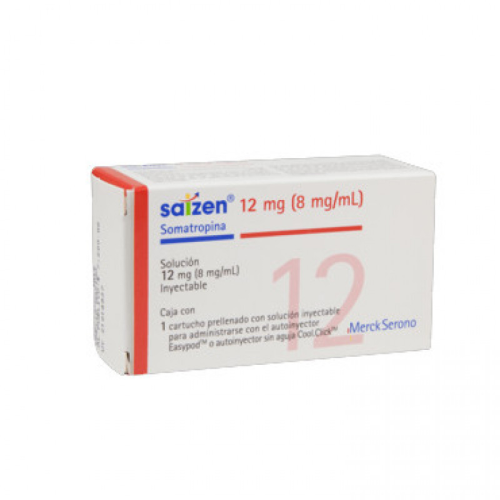ACTIVE HALF-LIFE
2.5-3 hours
CLASSIFICATION
Peptide Hormone
DOSAGE
Men 4-10 IU/day
ACNE
No
WATER RETENTION
No
HBR
No
HEPATOTOXICITY
No
AROMATIZATION
No
MANUFACTURER
Merck
WAREHOUSE
International Warehouse 2
SUBSTANCE
Somatropine - 191 Amino Acid
,
Human Growth Hormone (HGH), also referred to as somatotropin or somatropin, is a peptide hormone that promotes growth, cell reproduction, and regeneration in humans and other animals. It acts as a specific mitogen for certain cell types. HGH is a single-chain polypeptide consisting of 191 amino acids, produced, stored, and released by somatotropic cells located in the lateral sections of the anterior pituitary gland. The release of HGH is influenced by various factors, including diet and physical activity.
HGH encourages body cells to grow in size and divide at an accelerated rate. It also facilitates the transport of amino acids across cell membranes and enhances the conversion of those molecules into proteins, contributing to an anabolic (muscle-building) effect. Additionally, HGH allows cells to slow down their normal carbohydrate usage while increasing fat utilization. Research has shown that fat loss and lean muscle gain can occur with as little as 0.028 iu/kg daily over a period of 24 weeks. Moreover, it stimulates the production of IGF-1.
Medically, HGH is utilized to treat growth disorders in children and hormone deficiencies in adults. Studies have consistently shown several benefits associated with HGH modulation, including:
Additionally, various studies, mainly involving individuals with HGH deficiency, suggest that HGH plays a vital role in mental and emotional health and helps maintain high energy levels. Adults lacking HGH often experience higher rates of depression compared to those with sufficient levels.
Furthermore, HGH has been studied for its potential impact on cognitive abilities, such as learning and memory. It seems to enhance cognitive function and may benefit those suffering from cognitive impairments due to HGH deficiency.
In the context of competitive sports, HGH has been misused as an anabolic agent since at least 1982. While it is effective for promoting significant muscle and weight gains, it is not particularly efficient for increasing strength. Competitors in the 1970s and especially the 1980s began to exhibit a more refined, sculpted appearance, reminiscent of classical sculptures. It can be inferred that they were likely not incorporating much additional cardio or consuming higher amounts of lean proteins.
HGH tends to produce better results and more favorable effects when used alongside a steroid cycle compared to when taken alone. As such, it is generally more suitable for cutting cycles aimed at achieving lean muscle and fat loss.

